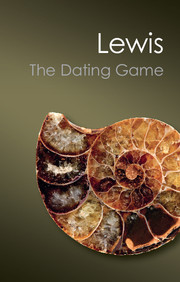Book contents
- Frontmatter
- Contents
- List of Illustrations
- Prelude to the Game
- A Brief History of Time
- Darwin's Sorest Trouble
- Mysterious Rays
- Doomsday Postponed
- Holidays in Mozambique
- This Vegetable Prison
- A Brimful of Promise
- Liquid Gold in Yenangyaung
- Durham Days
- The Ardnamurchan Affair
- Rewards and Retributions
- Why does the Sun Shine?
- The Age of Uranium
- The Age of the Earth
- Loose Ends
- Thanks and Acknowledgements
- Selected Bibliography
- Index
Darwin's Sorest Trouble
Published online by Cambridge University Press: 05 February 2014
- Frontmatter
- Contents
- List of Illustrations
- Prelude to the Game
- A Brief History of Time
- Darwin's Sorest Trouble
- Mysterious Rays
- Doomsday Postponed
- Holidays in Mozambique
- This Vegetable Prison
- A Brimful of Promise
- Liquid Gold in Yenangyaung
- Durham Days
- The Ardnamurchan Affair
- Rewards and Retributions
- Why does the Sun Shine?
- The Age of Uranium
- The Age of the Earth
- Loose Ends
- Thanks and Acknowledgements
- Selected Bibliography
- Index
Summary
How immeasurable would be the advance of our science could we but bring the chief events which it records into some relation with a standard of time!
William SollasLike most small boys brought up in a religious community, as would have existed in the Methodist enclaves of Gateshead at the turn of the twentieth century, Arthur Holmes and his friend Bob Lawson did not often find their favourite reading in the Bible. But in years to come Arthur well remembered his parent's Bible, and the magic fascination of the date of Creation, 4004 BC, which appeared in the margin of the first page. ‘I was puzzled by the odd “4”’, he wrote. ‘Why not a nice round 4000 years? And why such a recent date? And how could anyone know?’ But all he learnt from his parents was that to question the ‘Word of God’ was simply ‘not done’. This Biblical time barrier was further reinforced in Arthur's mind at Sunday School through the teachings of Philip Gosse, a Victorian naturalist who considered he had reconciled Hutton's geological findings with the Scriptures in his distinguished book Omphalos. In this work no compromise was called for. It was only necessary to believe that the Earth was created about 6000 years ago, in strict accordance with Biblical chronology, ‘exactly as it would have appeared at that moment of its history, if all the preceding eras of its history had been real’.
- Type
- Chapter
- Information
- The Dating GameOne Man's Search for the Age of the Earth, pp. 27 - 39Publisher: Cambridge University PressPrint publication year: 2012



